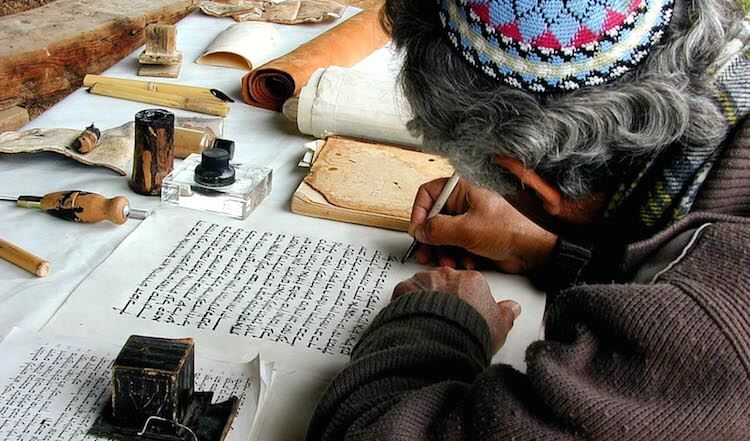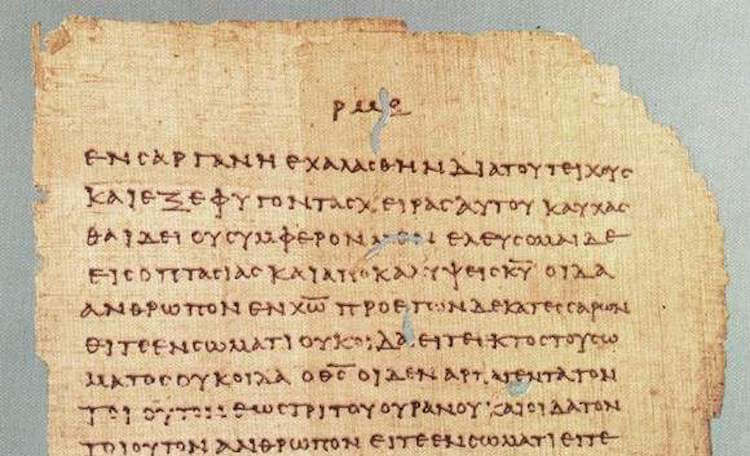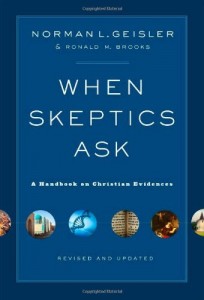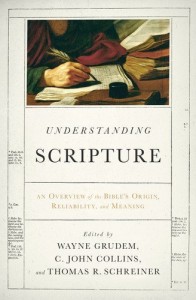It’s one thing to believe the Bible represents the Word of God when the biblical authors originally wrote it. It’s something else to say the copies we have today represent Scripture. After all, the originals no longer exist.

(Photo by Photodune)
What’s more, what texts we do have reflect many centuries of copying—and many scribal variants. So how can we trust the Bible? How can we have confidence in the reliability our modern Bibles?
Here’s why we can trust our Bibles.
The Reliability of the Old Testament
Scribes meticulously copied the Old Testament Scriptures on parchment or animal skins. Skin doesn’t last forever, though, and when a copy wore out, the Jews would bury it.
- As a result, at one point, the oldest copies of the Hebrew Scriptures that we had dated only to the tenth century AD.
- But the 1947 discovery of the Dead Sea Scrolls at Qumran provided manuscripts dated to the second century BC—one thousand years earlier—and proved the remarkable copying accuracy.

(Photo: Scribe copying Scripture. Courtesy of the Pictorial Library of Bible Lands)
The scribes worked so carefully that:
Any copy with just one mistake in it was destroyed. This guarantees us that there has been no substantial change in the text of the Old Testament in the last 2,000 years and evidence that there was probably very little change before that.1
Regardless of the original location, date, or translation of the manuscripts we have today, they exhibit remarkable agreement with one another and give us confidence that they faithfully represent the original Hebrew Scriptures.
The Reliability of the New Testament
When we consider secular history, amazingly, we have a limited number of Greek manuscripts:
- The oldest copies of manuscripts written by Tacitus, Thucydides, and Herodotus date from between the ninth and eleventh centuries AD.
- We only have, respectively, three, twenty, and seventy-five manuscripts of each.2
- And we base world history on these few manuscripts!
The New Testament, on the other hand, has far better attestation than any other work of antiquity.
Dr. Daniel Wallace recently gave this brief interview (and wrote this article), explaining the astonishing number of manuscripts we have. More importantly, he shares why we can have confidence in our New Testaments and trust the Bible:
- The New Testament has approximately 5,700 surviving Greek copies (plus more than ten thousand copies in Latin) dating from between the second and tenth centuries.
- In fact, even if we had no existing manuscripts, we could reassemble the New Testament almost completely from the quotations found in the writings of the church fathers.3
How Can We Trust the Bible with All Those Errors?
Ever heard that question? Ever HAD that question?
Often it helps to address this question by asking: “Errors? Name one.” This isn’t meant as a challenge but as a clarifier. It’s helpful to note the difference between an “error” and a “variant,” because they mean different things. To say that scribes and copyists have introduced thousands of “errors” in the Bible is confusing—and inaccurate.
Most things people call “errors” are actually variants, and most of those are easily resolved. For example:
- A variant occurs when one manuscript differs from another in some way.
- Of the approximately 400,000 variants4 that exist in the New Testament, most are simple variations of sight and sound—such as a word misspelled or a line accidentally skipped.
- These are easily corrected by comparison with other manuscripts—and in many cases, by common sense.
Building Trust in the Truth
All this means we can be certain that the Bibles we hold in our laps are faithful translations from the original languages.
- In the end, the New Testament contains only about 40 places where we’re uncertain which variant is original.
- And even in those few places where the correct reading remains uncertain, the New Testament represents a copying accuracy of 99.5 percent.5
- Moreover, not one place in the New Testament—or in the Old Testament—does a doctrine of our faith stand or fall on a variant.
So, even though we’re unsure about how to read 1/2 of 1% of the Bible, we can have full confidence that we can understand 100% of what God wants us to know.
Tell me what you think: Why do you have confidence in your Bible? To leave a comment, just click here.
Adapted from Wayne Stiles, “The Reliability of Our Modern Bibles,” in Our Amazing Bible Passport (IFL Publishing House: Plano, TX, 2015), 7-9.
Both of these sources I reference above would be excellent for further study:
Deepen Your Faith Through Scripture
Join us for a year-long interactive study of the New Testament & Proverbs that includes maps, photographs, and virtual tour videos that helps bring context and meaning to Scripture. Learn more:
Endnotes
1. Norman L. Geisler and Ronald M. Brooks, When Skeptics Ask (Grand Rapids: Baker Books, 1990), 159.
2. Daniel B. Wallace, “The Reliability of the New Testament Manuscripts,” in Understanding Scripture: An Overview of the Bible’s Origin, Reliability, and Meaning, ed. Wayne Grudem, C. John Collins, Thomas R. Schreiner (Wheaton, Ill.: Crossway, 2012), 114.
3. Wallace, “The Reliability of the New Testament Manuscripts,” in Understanding Scripture, 114.
4. Wallace, “The Reliability of the New Testament Manuscripts,” in Understanding Scripture, 114.
5. Geisler and Brooks, When Skeptics Ask, 160.




